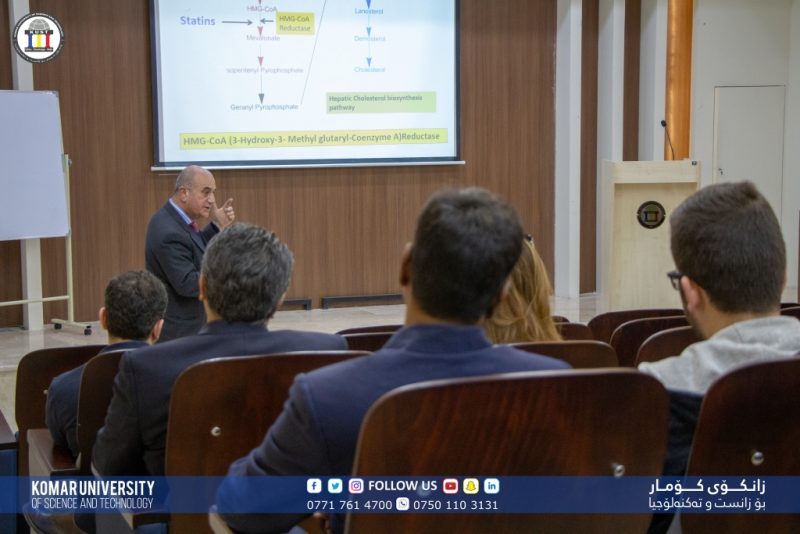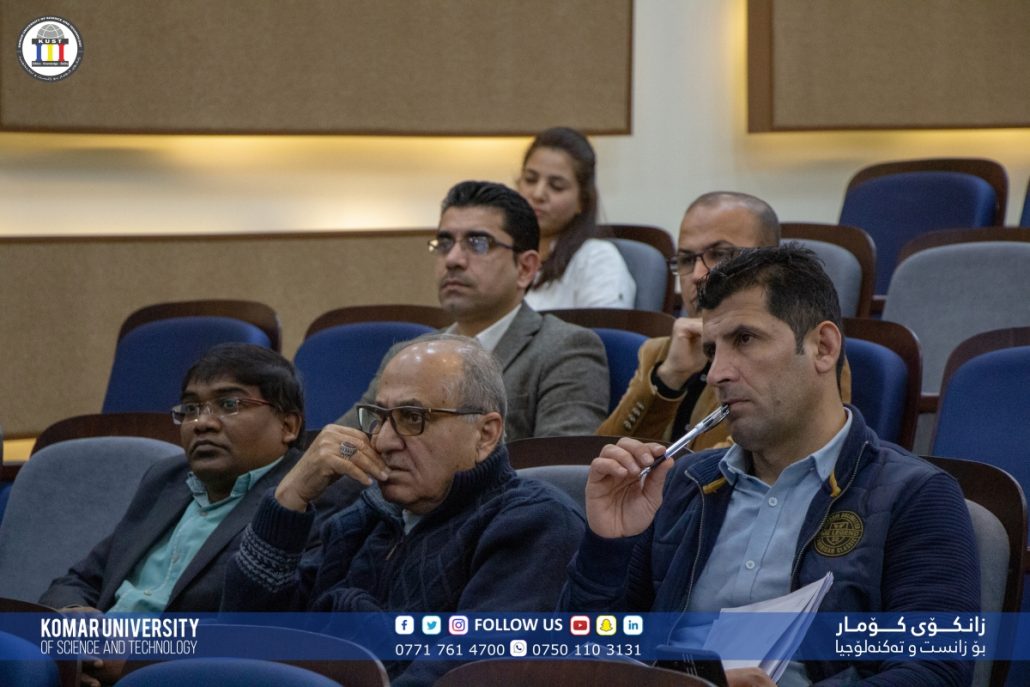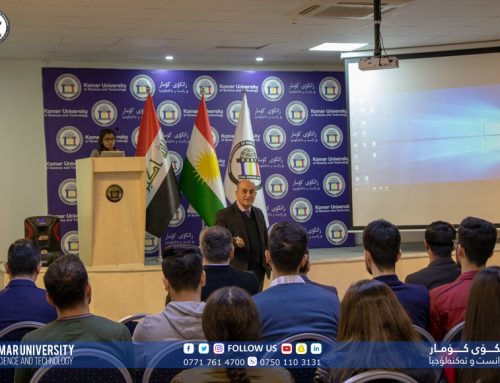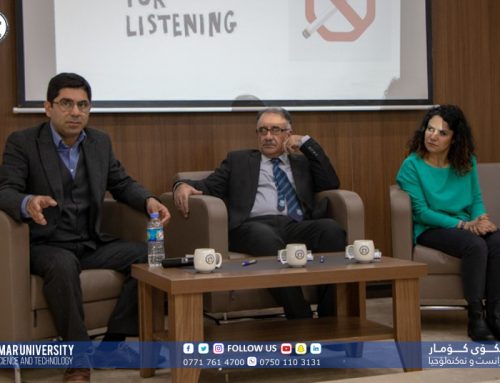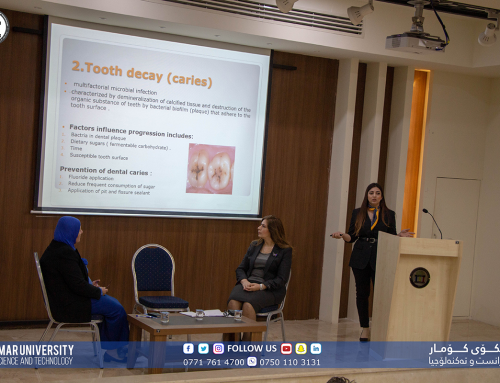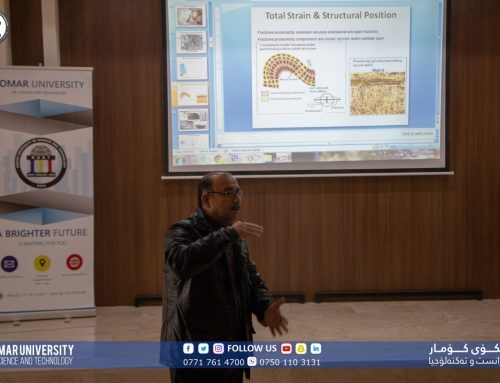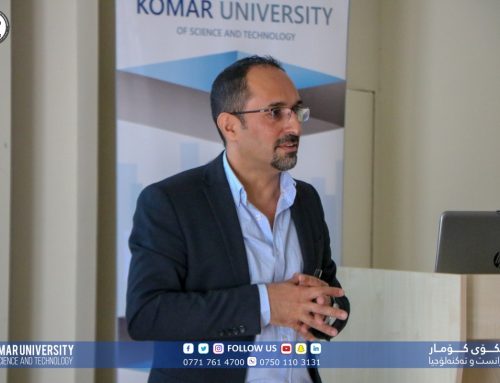On Feb 14th 2019, a symposium entitled Drug Discovery, Development and Regulations was conducted at the KUST Auditorium located in E-Building. The symposium was organized in cooperation between the recently opened Pharmacy Department and the Computer Engineering/Computer Science Department. Three sessions and speeches were presented, and each session ended up with analyzing and discussion.
Dr Asos Rasoul, Chairman of the Pharmacy Department, offered a presentation about Drug Discovery and Development, where he extensively explained how drug discovery and development need long, complex and expensive process that involves many scientific disciplines such as biology, chemistry, pharmacology, biochemistry, computer design and bioanalysis. He demonstrated the basic fundamentals of drug discovery and development, present the multifaceted process of identifying anew drug in the 21st century. Various stage of the drug discovery process that starts with an idea or an observation through recognition of lead compounds, optimizing the lead compound, pre-clinical trial clinical trial, drug formulation and post marketing data collection were explained.
Dr Ali Yaseen, faculty member of the Pharmacy Department, presented The History of Drug Regulation and FDA. He demonstrated that the drug regulation around the world is at its most developed than ever before; it is based on safety, efficacy and quality. He showed that this sophisticated level of drug regulation has been reached via many incidents in the history health system. Later on, he went through the milestones in the history of drug regulation of FDA, and he added the major milestones like invention of the first pharmacopoeia in the world, the first drugs Act in the USA, the Kefauver Harris amendments, the thalidomide incident in the world and how it was dealt with in the US.
Dr Osman Sharif, Chairman of the Computer Engineering and Computer Science Departments, presented the last session which was about Automated Assessment of the Impact of Rosiglitazone on Structure & Morphology of Skin Layers. He lighted up the role of computer science and IT and the importance of automated high-throughput bioimaging technique in drug discovery and development. In details he discussed how using image processing and analysis capability facilitates to segment and detects features in skin tissue section which might provide critical information for the impact of drugs on alterations in structure and morphology of skin layers. He added that in drug discovery and development an automated throughput analysis is required to find significant changes in skin structure and morphology after the use of Rosiglitazone as a treatment of diabetes and obese individuals.
